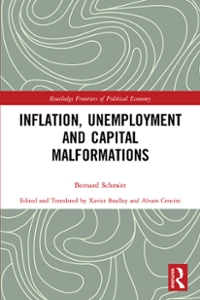Two players are bargaining over a three period bargaining model as discussed in class with player 1 making offers in rounds 1 and 3. Player 2 makes an offer in round 2 only. Each player has a common discount factor delta.
The two players are bargaining to split $20. They have three time periods available to them for their bargaining game. At the end of round 3, if no agreement has been reached then player 1 receives $2 and player 2 receives $1 and the rest of the money is destroyed.
Find the subgame perfect Nash equilibrium outcome in the finite horizon model in which the game ends
after period 3.
1. Suppose that the supply curve {private marginal cost} for a manufactured good is given by 05 2 EP 2 and that the demand for the product is given by DD 2 TI" - P. a. Find the price and quantity in market equilibrium. b. Suppose there is a negative er-lternalityr associated with production, with damages given by MD = OLE. What is the optimal quantityr of G for society to produce and consume? How much higher or lower is this than the market eduilibnum quantity? c. If society allows the market outcome [as opposed to requiring the optimal G] how much loss is there in total social welfare? d. Suppose we instead impose a policy that limits production of Gto a maximum of 1 unit. Assume as usual that price is given by the demand curve. What is the total social surplus? How does the distribution of this surplus differ when compared to the market outcome in part a {identityr winners an dr'or losers from this policy relative to the market outcome}? 1 Regulating Q vs. regulating p The process of tanning leather creates toxic byproducts that pollute the local water supply. Suppose that a city's tanneries (i.e., producers) compete in a perfectly competitive market, facing demand given by p(Q) = 120-Q and a constant (private) marginal cost of 30. Leather production causes external damage equal to D(Q) = 1Q2. a. Draw a clearly labeled graph representing this market. Your graph should include: . The private marginal benefit curve (i.e., the demand curve) . The private marginal cost curve (i.e., the supply curve) . The marginal damage curve . The social marginal cost curve Include axis labels for all points where these curves intersect each other or the axes. b. On your graph from part a, mark the competitive quantity (Q.) and price (p.). Shade in the deadweight loss and compute its area. Then calculate the total surplus (by first computing the consumer surplus, producer surplus, and total external damage). c. Find the socially optimal quantity (Q.). What is the marginal damage at Q.? What is the social marginal cost? What is the willingness to pay of the marginal consumer? d. Suppose that the city sets a market-wide quota equal to Q.. (For instance, if there are NV firms, the city could allow each firm to sell up to " units.) Compute the total surplus. (Hint: the change in total surplus relative to part b should equal the original deadweight loss.) Would the tanneries support this policy? Why or why not? e. Now suppose that the city decides to switch from a quota to a Pigouvian tax. In class, we saw that the government can ensure that the socially optimal quantity is produced by imposing an appropriate corrective tax on producers. Suppose instead that the city imposes a specific tax t on consumers for each unit they purchase. Find the value " that results in the socially optimal amount Q, being produced








